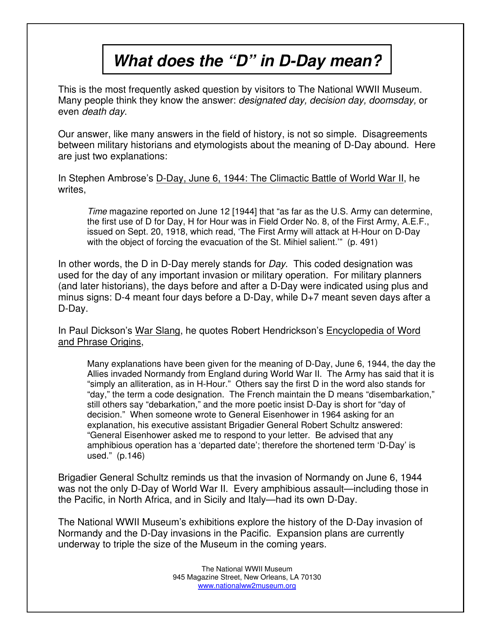What Does the 'd' in D-Day Mean - National Wwii Museum
The 'd' in D-Day stands for "day." It is a term used to represent the day on which a military operation is planned to begin. The specific meaning of the 'd' in D-Day can vary depending on the context. In the case of the National WWII Museum, they likely provide information and education about the history and significance of D-Day during World War II.
The 'd' in D-Day stands for "Day." It is used to represent the start date of an important military operation during World War II. It does not refer to a specific country.
FAQ
Q: What does the 'D' in D-Day mean?
A: The 'D' in D-Day stands for 'day'. It is commonly used in military planning to refer to the day on which a particular operation is set to begin.
Q: What is D-Day?
A: D-Day is the term used to refer to the day on which an important military operation or invasion is scheduled to begin.
Q: Why is D-Day important?
A: D-Day is particularly significant because it marks the start of the Allied invasion of Normandy during World War II, which ultimately led to the liberation of Western Europe from Nazi control.
Q: When did D-Day take place?
A: D-Day took place on June 6, 1944.
Q: Who was involved in D-Day?
A: The Allied forces, primarily composed of American, British, and Canadian troops, were involved in D-Day.
Q: How did D-Day lead to the end of World War II?
A: The success of the D-Day invasion allowed the Allies to establish a foothold in France and begin pushing back against the Axis powers. This ultimately led to the liberation of Western Europe and the eventual defeat of Nazi Germany.


